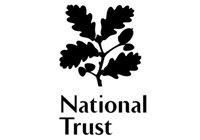- Home
- Haunted Castles
- Haunted English Castles
Haunted Castles in England
There is something enchanting and magical about English castles. Maybe it's the romance of fairy tale and folklore or the lure of dramatic tales of siege, battle and ghosts. Stepping into these chapters of the past is truly captivating.
Many of the castles though have a long and bloody history, with battles fought and executions taking place in the grounds of many of these historic sites. These are sites where mystery and history come together with tales of ghoulish happenings, each one creepier than the other.
The following castles have a history of paranormal activity and ghostly sightings. If you want to find out which one is the spookiest you may just have to visit them all on an epic tour of England's haunted castles.
ALNWICK CASTLE
Alnwick Castle is home to the Percy Family and is inhabited by the current 12th Duke off Northumberland. It played a crucial role in shaping the history of England, including border wars with Scotland and the Wars of the Roses.
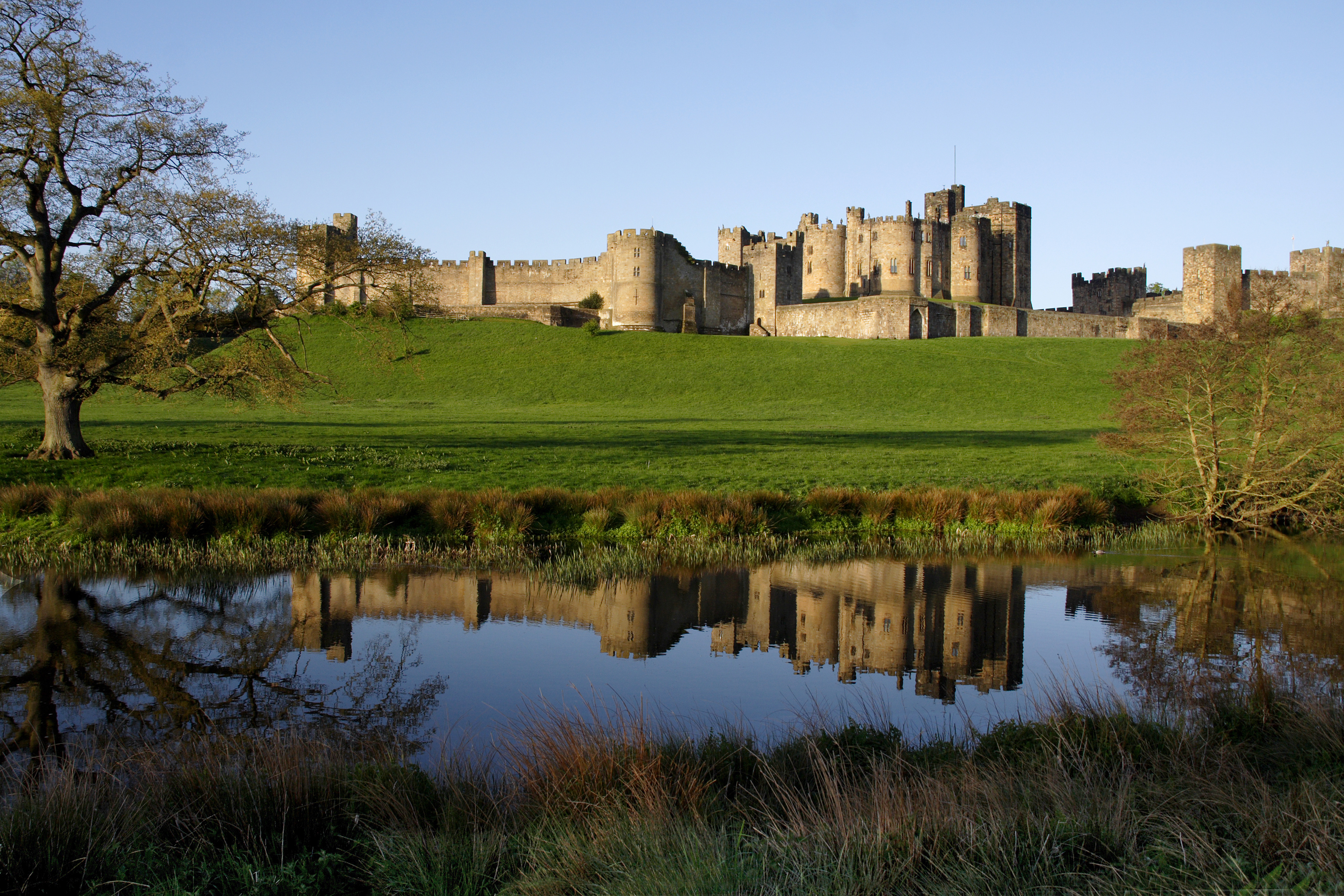
Alnwick Castle
Alnwick Castle also hides a dark side. There is the tale of the Alnwick Vampire and the legend begins with a man who served the lord of the castle suspecting his wife of committing adultery. As he tried to uncover the truth one day by climbing onto a rooftop he fell to his death. In spite of a Christian burial he could not rest in peace and his presence was felt all around Alnwick. The deceased man would rise from his tomb during the hours of darkness to prowl the town's streets. His body left such a stench of death that pestilence broke out. Finally local villagers blamed the vampire for the plague outbreak, dug out the body in the cemetery which was bloated and putrid and burned it to ashes, after which the pestilene ended.
There is also the ghost of the Grey Lady that people have spotted when walking in the corridors deep below the castle. She is supposed to be a young girl who worked as a maid at the castle. One day she stumbled and fell down a chute to the tunnels below and was crushed by a dumb waiter. Her spirit now roams the passages below the castle.
Location: Alnwick, Northumberland, NE66 1NG
Official Website: Alnwick Castle
BAMBURGH CASTLE
Bamburgh Castle stands high on a massive rock in Northumberland along the North Sea. Legend has it that the castle was the stronghold of Sir Lancelot, paladin of the Round Table and King Arthur's greatest knight.
Bamburgh Castle has a history stretching back more than 1400 years to the ancient kings of Northumbria. It was home to a succession of kings from Henry VI to James I and the first to fall to cannon fire as the War of the Roses drew to a close. Bamburgh remained in royal hands for many years. Eventually it was bought by the famous engineer and industrialist William Armstrong who started a huge restoration project of the castle and the castle remains in the Armstrong family to this day.
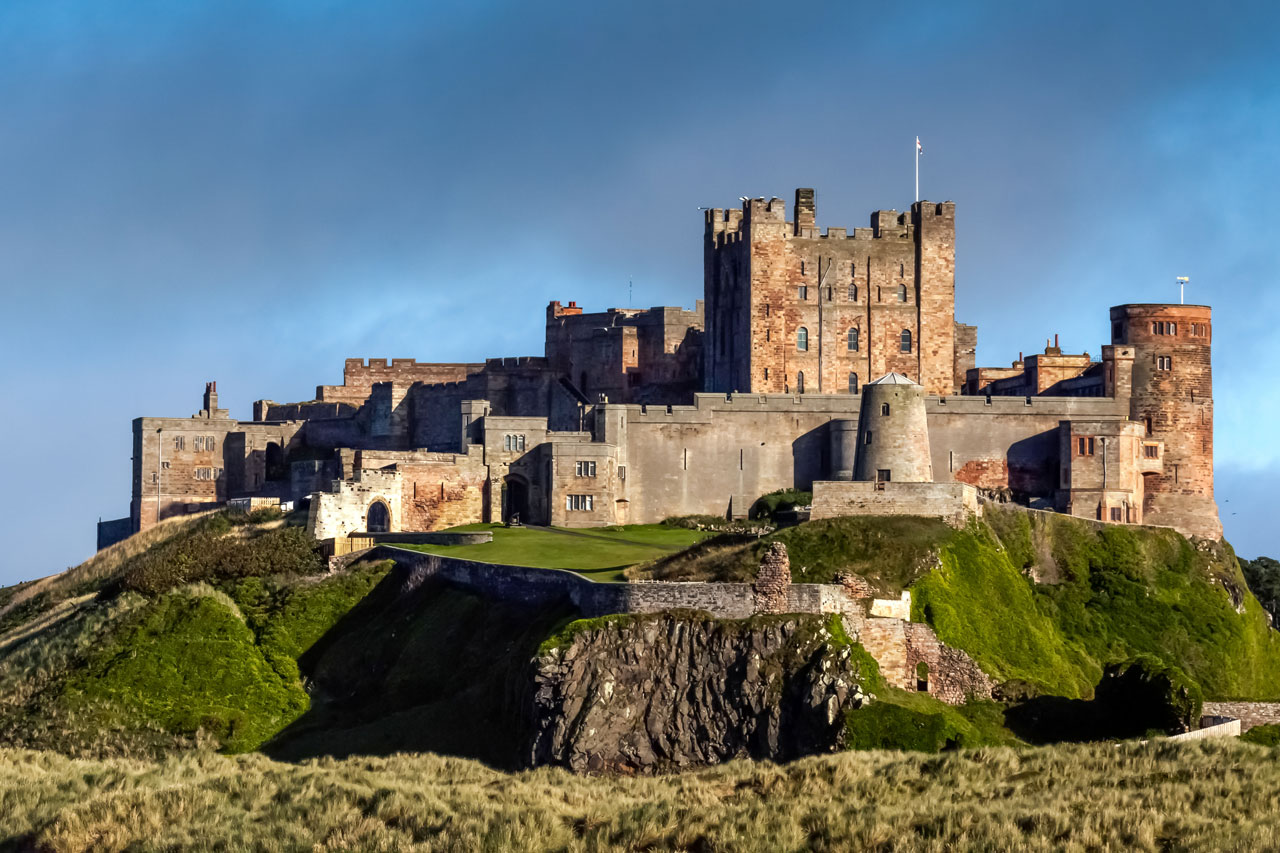
Bamburgh Castle
Bamburgh is home to its fair share of ghostly goings-on, from visitors claiming to have been touched by unseen hands, to stories of music playing in empty rooms and the sound of feet running along dark corridors in the dead of night. There is the ghost of the Green Lady, also known as Green Jane, named after the green cloak that she wears. She is said to have died along with her baby when she was sent to the castle to beg for food. The castle guards did not let her into the castle and tormented and abused her. She fell down a set of steep steps and collapsed.
The Pink Lady ist the castles most famous ghost and also the most commonly seen. She was a royal princess who fell in love with a man who her father did not approve of. He sent the unfortunate suitor overseas and hoped that his daughter's passion for him would stop. The girl became more and more depressed and the king finally told her that her lover married somebody else. To cheer her up the king ordered the castle's seamstress to make a fine dress in his daughter's favourite colour, pink. The distressed girl put on the dress, slowly walked to the castle wall and flung herself to her death on the rocks below. She is still seen in the old parts of the castle to this day as well as walking down from the castle to the beach.
The final ghost is a man called Dr John Sharp who worked in the restoration of the castle in the 18th century and also set up a school for local children, a hospital and an early lifeboat station. He was deeply invested in his castle and the community around it. He was so attached to this place that when he died he did not move on.
Location: Bamburgh NE69 7DF
Official Website: Bamburgh Castle
BERRY POMEROY CASTLE
Berry Pomeroy Castle is a most picturesque and romantic ruin and also supposed to be the most haunted in England. Located in Devon near the town of Totnes, it stands on a high point of land above the Gatcombe valley.
Since 1069 there have only been two families of owners, the Pomeroys and the Seymours. The castle lands were granted by William the Conqueror to Ralf de Pomaria, a Norman knight. Instead of a fortress Ralf built an unfortified manor house, which would become his family's home for the next 400 years. It wasn't until the late 15th century that the Pomeroy's began to build a castle fortress.
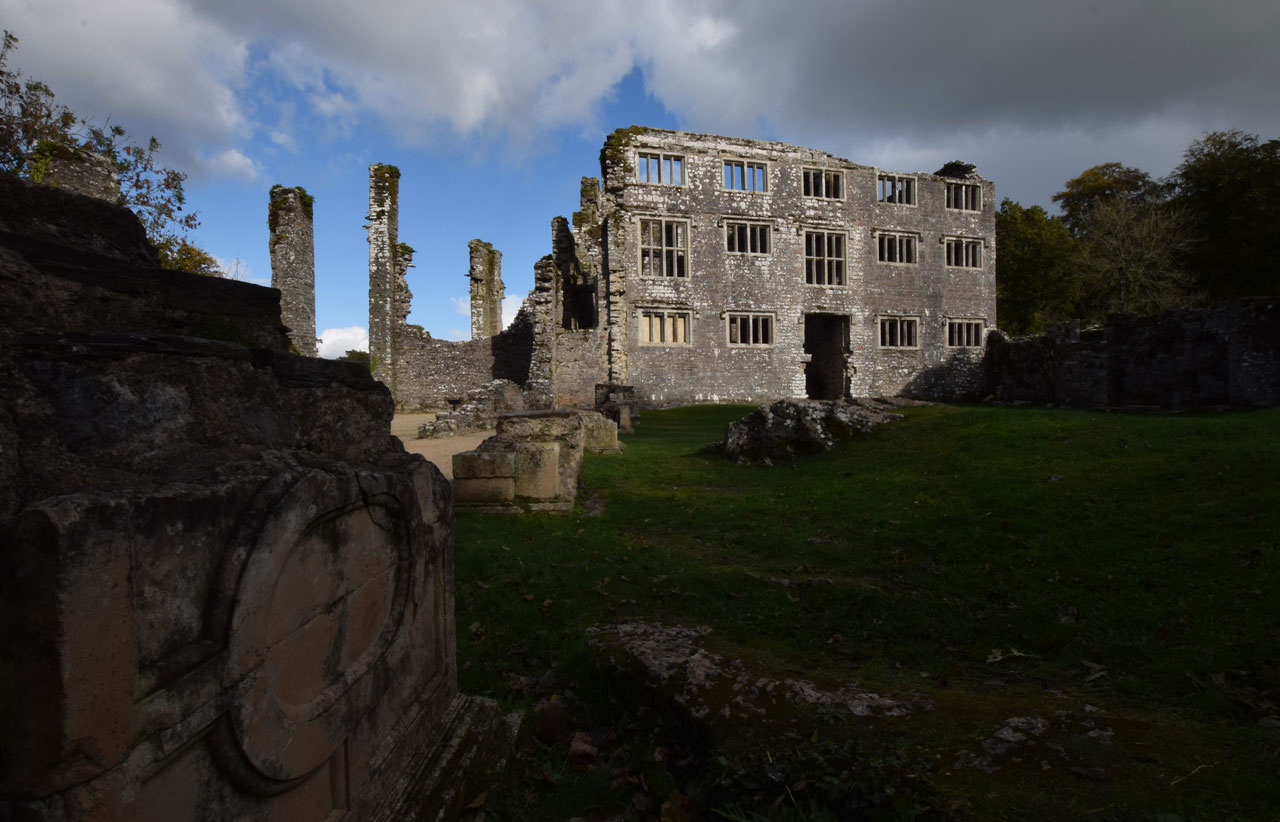
Berry Pomeroy Castle
Sir Edward Seymour then acquired the castle in the 1540s. He was the brother of Jane Seymore, the third wife of Henry VIII. Berry Pomeroy Castle remained in the hands of the Seymours untl 1688 when it was finally abandoned. In 1977 English Heritage took over the castle to save it from complete ruin.
Visitors to the castle have reported a number of ghostly sightings and several ghosts are said to wander inside its crumbling walls, of which the Blue Lady and the White Lady are the most talked about apparitions. The White Lady is the restless soul of Margaret Pomeroy. Her sister, Eleanor, held her captive in the castle dungeons because she was jealous of her beauty and Margaret starved to death. She haunts the dungeons of St. Margaret's Tower and has been seen waving to visitors.
The Blue Lady is believed to be the daughter of a Norman lord. She was raped by her father and became pregnant with his baby. She murdered the infant and is said to wander the ruins at night in eternal remorse and luring unsuspecting men to their deaths.
Other sightings at the castle include unexplained lights and a baby crying, as well as a lady in a grey dress.
Location: Berry Pomeroy, Totnes TQ9 6LJ
Official Website: Berry Pomeroy Castle
CHILLINGHAM CASTLE
The castle is set in outstanding 18th century parkland created by Capability Brown in the village of Chillingham in the northern part of Northumberland. Are you looking for a very chilling experience? Then be sure to visit as Chillingham Castle is one of the most haunted castles in England.
Chillingham was a 12th century stronghold when, in 1246, the Grey family marched in and evicted the owners. Their descendants have remained in possession ever since and this ancient fortress is now the family home of Sir Humphry Wakefield and his wife.
Henry III stayed there in 1245, as did the Kings Edward I in 1298 and James I. Later, Sir Thomas Grey was given permission to fortify the family stronghold and in 1344 Chillingham became a castle. Many other Royal visits right down through this century followed. The castle has changed very little architecturally since the 13th century except for the addition of Tudor galleries. At the centre of the castle is the Great Hall, an Elizabethan chamber overlooked by a medieval minstrel's gallery.
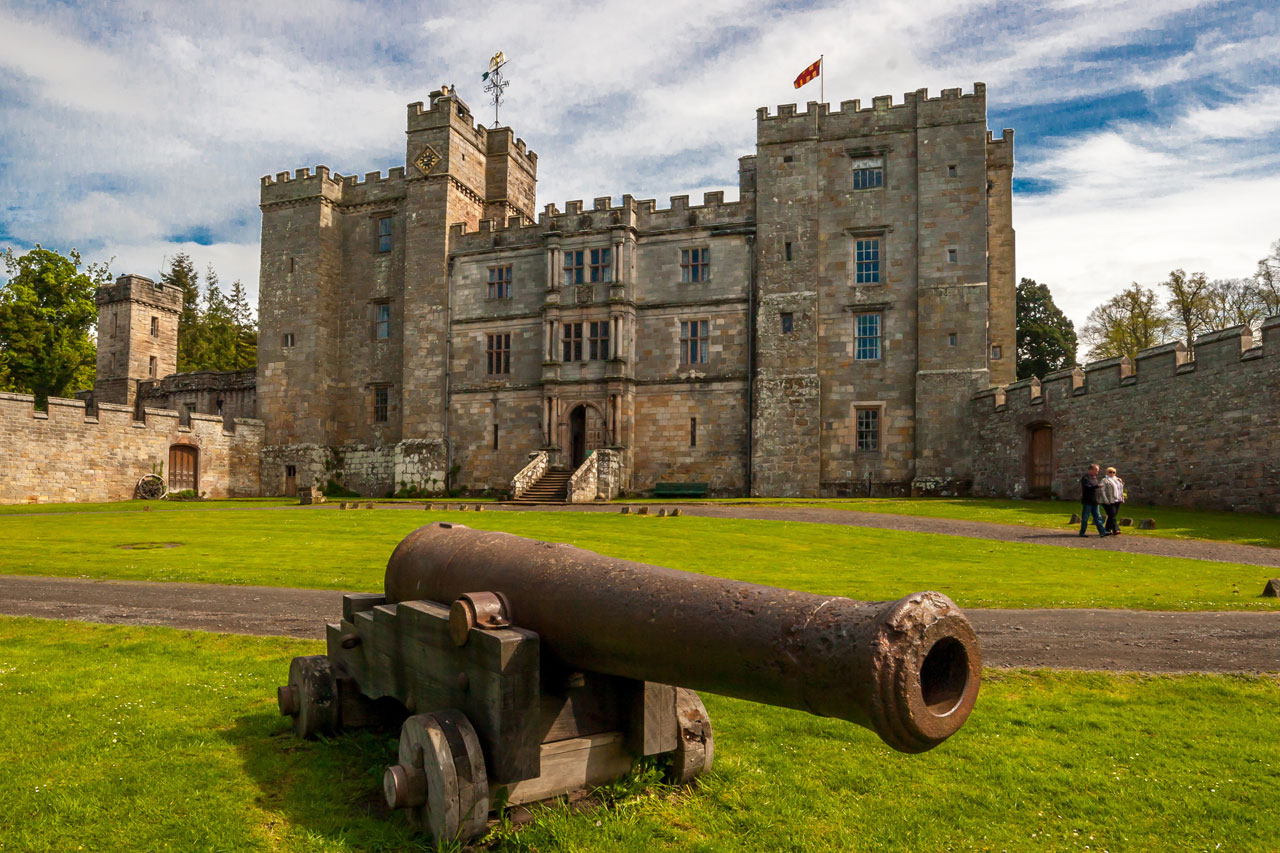
Chillingham Castle
Several ghosts are known to wander the castle's timeworn interior. The most famous is that of the 'Radiant Boy' or Blue Boy, a childish ghostlike image dressed in blue that was seen in the castle's Pink Room. It's cries would be heard at the stroke of midnight echoing through the corridors. Bones of a child were found behind a thick wall and given a Christian burial after which the boy was not seen any more. Sir Humphrey began letting the room and some guests have seen a blue flash shooting out of the wall.
The white pantry ghost, a frail figure in white, appears in what is called The Inner Pantry. The silver was stored there and a footman was employed to guard it. He was locked in every night when one night a lady in white appeared and asked for water. He was shocked as no visitor could possibly enter the chamber. This same frail figure is seen today.
However, not all ghost can be seen but there is this sense of something distinctly moving. It can be a creeping sensation or unmistakable whispering being heard in one of the rooms. Sometimes there is just an oppressive atmosphere, the sensation of someone touching your arm. Faint voices can be heard in the chapel and you can feel the presence of ghosts in the courtyard but not see them.
Chillingham Castle offer guided Ghost Tours and Ghost Hunts all year round. You can also stay in their self catering apartments or in apartments in the actual castle itself. This is really a rare experience of staying in a true medieval fortress.
Location: Chillingham, Northumberland NE66 5NJ
Official Website: Chillingham Castle
MUNCASTER CASTLE
Muncaster Castle dates largely from the 1860s, when the architect Anthony Salvin more or less rebuilt what had been the home of the Pennington family since 1208. The original castle was built in the 13th century and enlarged in the 14th century when a pele tower was constructed on Roman foundations. The castle has a famous lucky object called the 'Luck of Muncaster'. It is a green tinted glass bowl given to the Pennington family by Henry VI in 1464 in appreciation of the hospitality he received when he was a fugitive after being deposed in the Wars of the Roses. As long as the bowl was intact the Penningtons would always be at Muncaster.
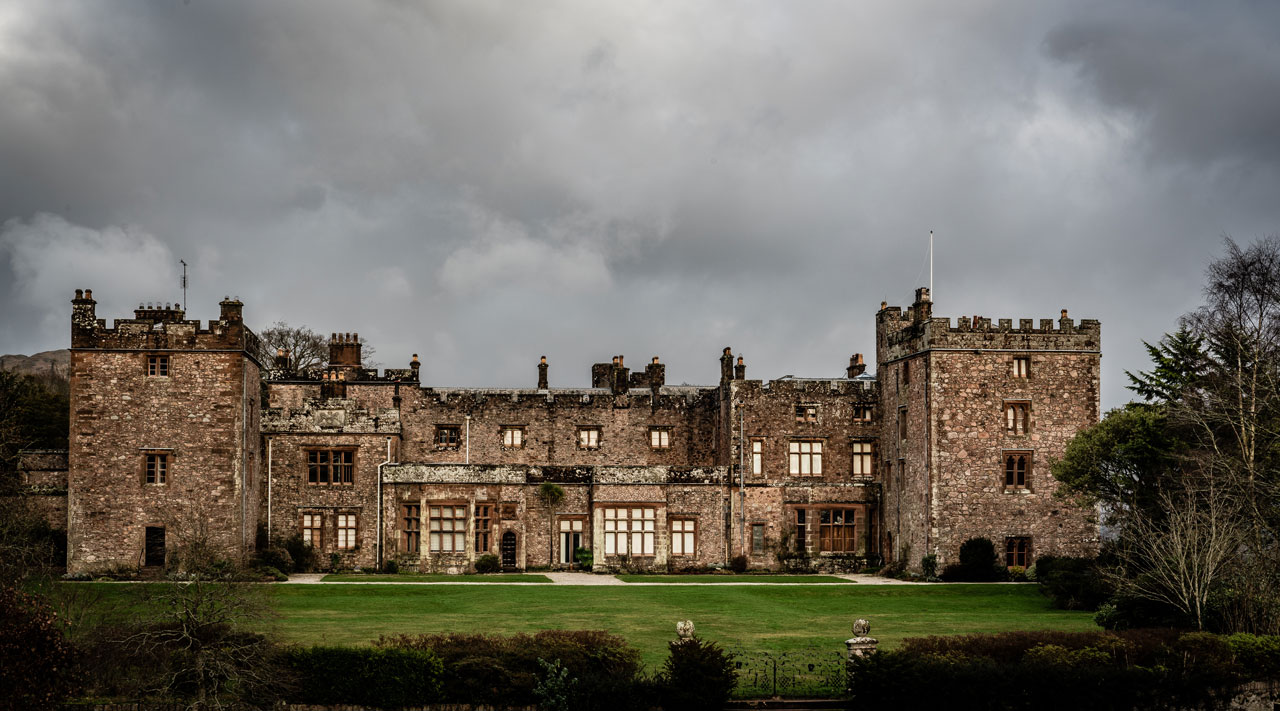
Muncaster Castle
Not surprisingly the castle also has a reputation of being one of the most haunted fortresses in Britain. Visitors have reported bizarre occurrences of strange noises, disappearing figures and an overwhelming feeling of a strange presence. One such presence is Tom Fool, aka Thomas Skelton, whose portrait is one of the castle treasures. He was a 16th century jester to the Penningtons and a rather sinister and spiteful character. He was responsible for the beheading of a local carpenter who fell in love with Sir Ferdinand Penningtons daughter, Helwise, on the orders of her father.
The White Lady, aka the Muncaster Boggle, is another well known ghost. She is thought to be the spirit of Mary Bragg, a young girl murdered in the 1800s on the road near the Main Gate. She now haunts the gardens and roadways around Muncaster.
Today Muncaster Castle is one of the biggest attractions in the Western Lake District of Cumbria. Standing in an elevated position just outside the coastal village of Ravenglass, the castle commands amazing views over the River Esk and the mountains. It's interesting history, wonderful gardens and regular events draws in visitors from all over the world. Dare you spend a night in the Tapestry Room and meet the ghostly residents ?
Location: Ravenglass, Cumbria, CA18 1RQ
Official Website: Muncaster Castle
